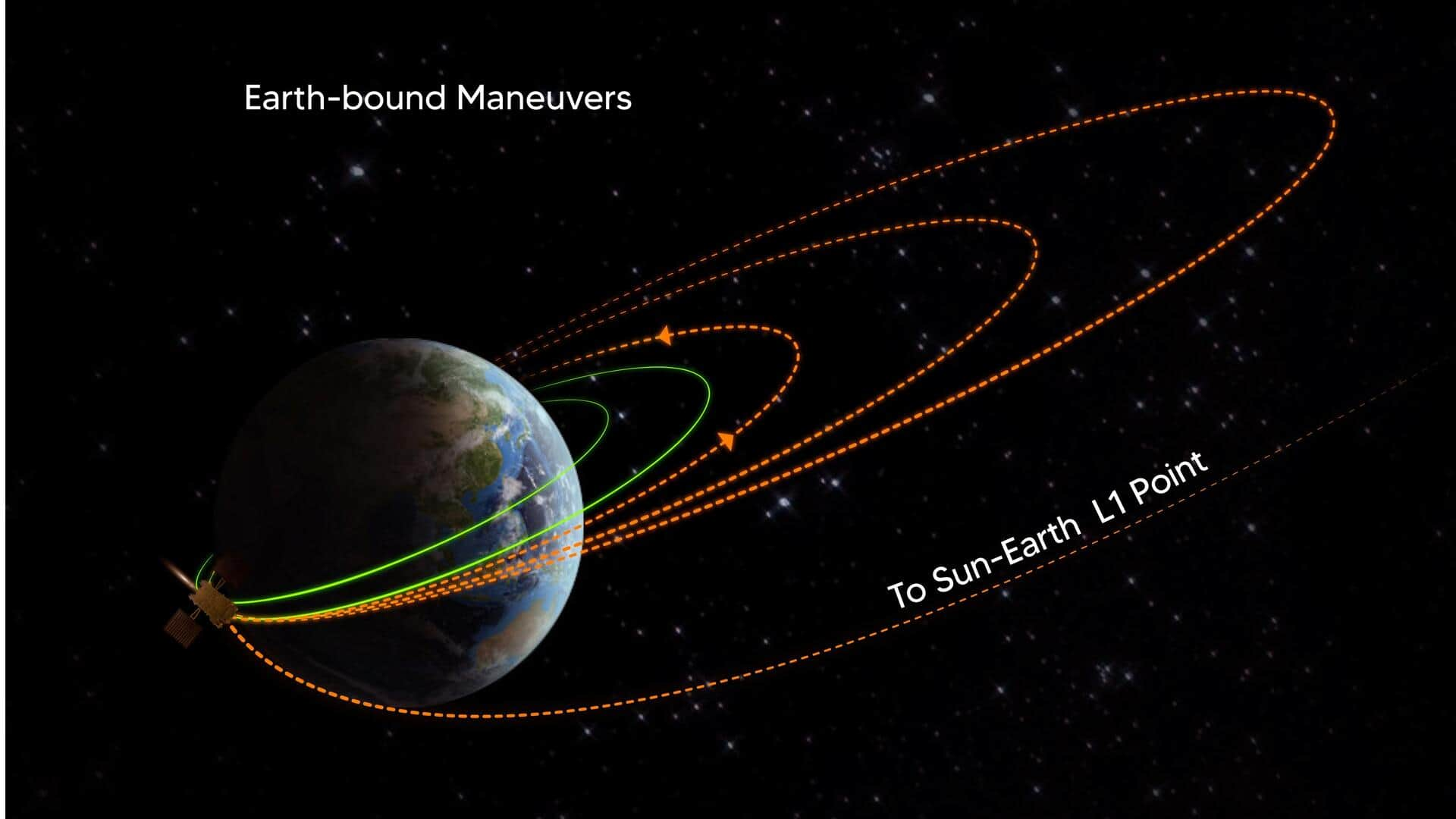
ISRO's Aditya-L1 mission completes third Earth-bound maneuver
What's the story
The Indian Space Research Organisation (ISRO) has announced that India's first solar mission, Aditya-L1, has completed its third Earth-bound maneuver. The new orbit attained is 296x71,767km, according to the space agency. Last week, the satellite had attained an orbit of 282x40,225km in its second maneuver. The solar observatory is on track to reach its destination at Lagrangian Point 1 (L1), 1.5 million kilometers away from Earth, where it will study the Sun and its impact on space weather.
Twitter Post
Take a look at ISRO's post
Aditya-L1 Mission:
— ISRO (@isro) September 9, 2023
The third Earth-bound maneuvre (EBN#3) is performed successfully from ISTRAC, Bengaluru.
ISRO's ground stations at Mauritius, Bengaluru, SDSC-SHAR and Port Blair tracked the satellite during this operation.
The new orbit attained is 296 km x 71767 km.… pic.twitter.com/r9a8xwQ4My
Scenario
Aditya-L1's next maneuver on September 15
Aditya-L1 will undergo five orbit-raising maneuvers during its 16-day Earth-bound journey, with the fourth one scheduled for September 15. Once it gains enough velocity, the satellite will slingshot toward L1, the point where the gravitational pull of the Sun and the Earth equals out. Positioned in a halo orbit around the L1, Aditya-L1 will have an uninterrupted view of the Sun, enabling continuous observation of solar activities and real-time data collection.
Insights
India's leap in space research: Predicting space weather and beyond
Aditya-L1's data will contribute to identifying the sequence of processes leading to solar eruptive events and a deeper understanding of space weather drivers. This knowledge will help scientists predict and mitigate the effects of space weather on Earth, such as disruptions to communication systems, power grids, and satellite operations. The mission marks a significant milestone in India's space research and exploration efforts, after Chandrayaan-3, the world's first mission to land near Moon's south pole.
Details
Aditya-L1's payloads will help unravel solar mysteries
ISRO launched Aditya-L1 on September 2 from the Satish Dhawan Space Centre. The space-based solar observatory carries seven payloads to study various aspects of the Sun. The mission aims to investigate the solar corona's physics, solar wind acceleration, coupling and dynamics of the solar atmosphere, and the origin of Coronal Mass Ejections (CME) and flares. The satellite will take roughly four months to reach its target L1 location.